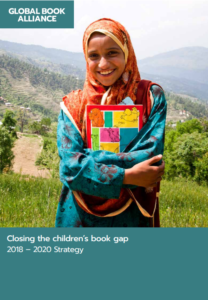387 million children and adolescents around the world lack basic reading skills.
That’s a little more than the population of the entire United States. This doesn’t just harm these children and their own prospects for educational and economic success later in life, but it harms us all. Illiteracy costs governments and economies $129 billion per year. These children are held back because they are missing an essential and maddeningly rare commodity: a reading book. What’s more, books are often in a language that children don’t speak at home, or at an incorrect reading level. For example, In Malawi, there are about 2.2 million native speakers of Tumbuka and another 2.2 million native speakers of Yao. Yet there are fewer than 20 reading book titles available in either language.
“It is hard to imagine learning to read without access to books but that is in fact what we expect of millions of children around the world.”
— Joseph Nhan-O-Reilly
The good news is that these problems can be addressed. But no one intervention will be sufficient. We need to work together to close the children’s book gap. The Global Book Alliance, launched earlier this week, is a collaborative of governments, intergovernmental organizations, nonprofits, and private companies that are committed to bringing books to every child in the world by 2030. Its mission is to transform the world’s book chain – building a robust ecosystem in which organizations, local publishers, and governments efficiently provide high-quality books to the communities, schools, and children that demand them.

One way the Alliance aims to do this is through its flagship initiatives, designed to build momentum for the Alliance’s work in the years to come. One of the first flagship initiatives, the Global Digital Library, is expected to launch before April 2018. The idea for the GDL originated with All Children Reading: Grand Challenge for Development and is now led by Norad with support from a broad advisory group. The GDL will provide a repository for high-quality open-source reading resources that are available on the web, mobile devices, and for print by local publishers – increasing online access to books for students and their communities.
“The Global Book Alliance has been established to ensure the world’s children have access to quality books in a language that they understand so that they can learn to read, read to learn, and develop a love of reading.”
—GBA Strategy 2018-2020
By building sustainable markets for the provision of reading materials produced in languages children use and understand (including braille and sign languages), the Global Book Alliance strives to open the door to lifelong learning for millions of children around the world.